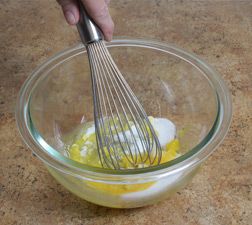 |
|
- Separate the egg yolks from the whites and place the yolks in a heat proof bowl. Add 1/3 cup of sugar and whisk into the yolks.
|
 |
|
- Whisk the sugar and yolks until the mixture is smooth; then set aside.
|
- Pour the cream into a heavy saucepan and heat over medium low heat just until the cream is steaming. You may see small bubbles around the edges but do not bring the cream to a boil.
|
|
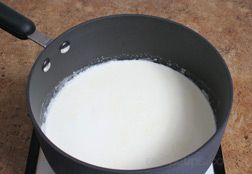 |
- Remove the cream from the heat. Allow it to set for just a minute and then begin adding it to the egg and sugar mixture one tablespoon at a time.
|
|
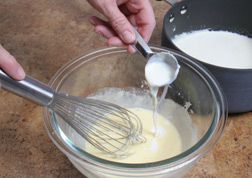
 |
- Whisk the custard constantly as you are adding the heated cream. Adding the heated cream slowly will temper the eggs and prevent them from curdling.
|
- After you have added about 6 tablespoons of heated cream to the egg mixture, go ahead and slowly pour in the remaining cream.
|
|
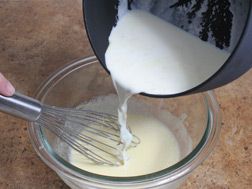 |
- Make sure to continue whisking the custard as you are adding the cream. Whisk until smooth.
|
|
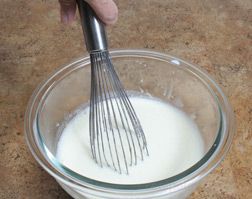 |
 |
|
- Once all the cream has been incorporated into the egg mixture, pour the custard through a fine mesh sieve to remove any lumps that may have formed.
|
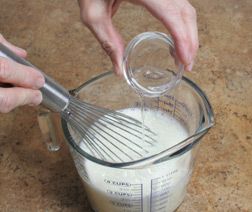
 |
|
- Add the vanilla to the strained custard and whisk again until smooth.
|
- Add boiling water to the bottom of a baking pan that is large enough to hold the ramekins. Add water until it reaches about 1/3 the depth of the ramekins. Adding the water to the baking pan before placing the ramekins in the pan will help guard against water splashing into the ramekins.
- The water bath will allow the custards to cook evenly.
|
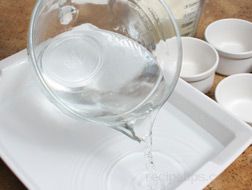
 |
|
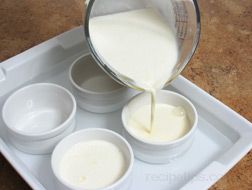
 |
- Then carefully place the ramekins in the water. When you add them the water level should rise so that it is about halfway up the side of the ramekins. If the water level does not rise up halfway on the ramekins, carefully pour more water in the baking dish until the water level is halfway up the sides. Be careful that you do not splash water into the ramekins.
- Pour even amounts of the custard into the 4 ramekins.
|
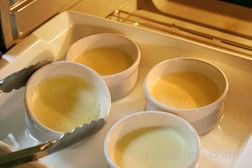
 |
|
- Place the custard in an oven preheated to 250°F. Bake for approximately 1 hour. The custard is done when the edges are set but the middle still shows a little movement, similar to when you jiggle Jell-O. Overcooking will result in custard that is not as creamy but it will still task good.
|
- Note: you do not want the tops of the custard to brown while baking so keep the top away form the heat source. If the oven has a top heat source, you may want to place a cookie sheet on the top rack to protect the tops from exposure to the top heating element.
|
 |
|
- When the custard is done, remove it from the oven and place it on a rack to cool completely. Once cooled, cover each with plastic wrap and refrigerate for at least 4 hours or up to 24 hours if desired.
|
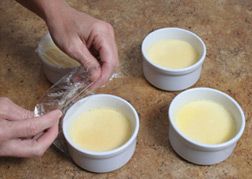 |
|
- Shortly before you are ready to serve the creme brulee, take it from the refrigerator and remove the plastic wrap. If moisture formed on the plastic wrap while the custard was refrigerated, check to see if any dropped on top of it. Use a paper towel to blot up any moisture.
|
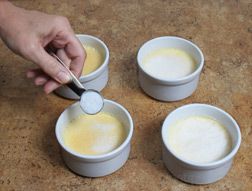
 |
|
- Sprinkle the top of each of the custards evenly with a teaspoon of sugar.
|
- Note: If you are using shallower ramekins that are larger in circumference, you may have to use more than a teaspoon of sugar on top of each to cover the entire surface adequately. The surface should have a nice even coverage but be careful of getting the sugar coating too thick. The thicker the sugar the longer it will take to brown it sufficiently. If it is being browned under a broiler and it takes longer than normal because the sugar is too thick, the custard will start to cook and this can have an affect the texture of the custard.
|
- Place the sugar coated custard under the broiler, 4 or 6 inches from the heat source.
|
|
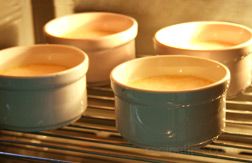 |
- Broil until the sugar bubbles and turns a golden brown color. Do not over brown it or the topping will have a bitter taste.
|
|
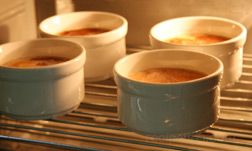
 |
- Another method of browning the sugar is to use a kitchen butane torch. Heat the sugar with the flame until it bubbles and turns golden brown.
|
- Once the sugar on top of the custard is browned properly, allow it to cool slightly and serve.
|
|
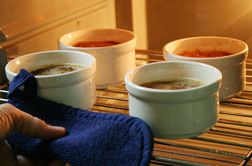 |
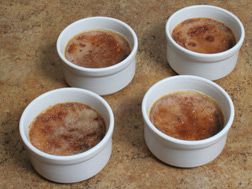 |
|
- The creme brulee can be eaten while it is still slightly warm or it can be cooled at room temperature and then chilled in the refrigerator before serving.
|

